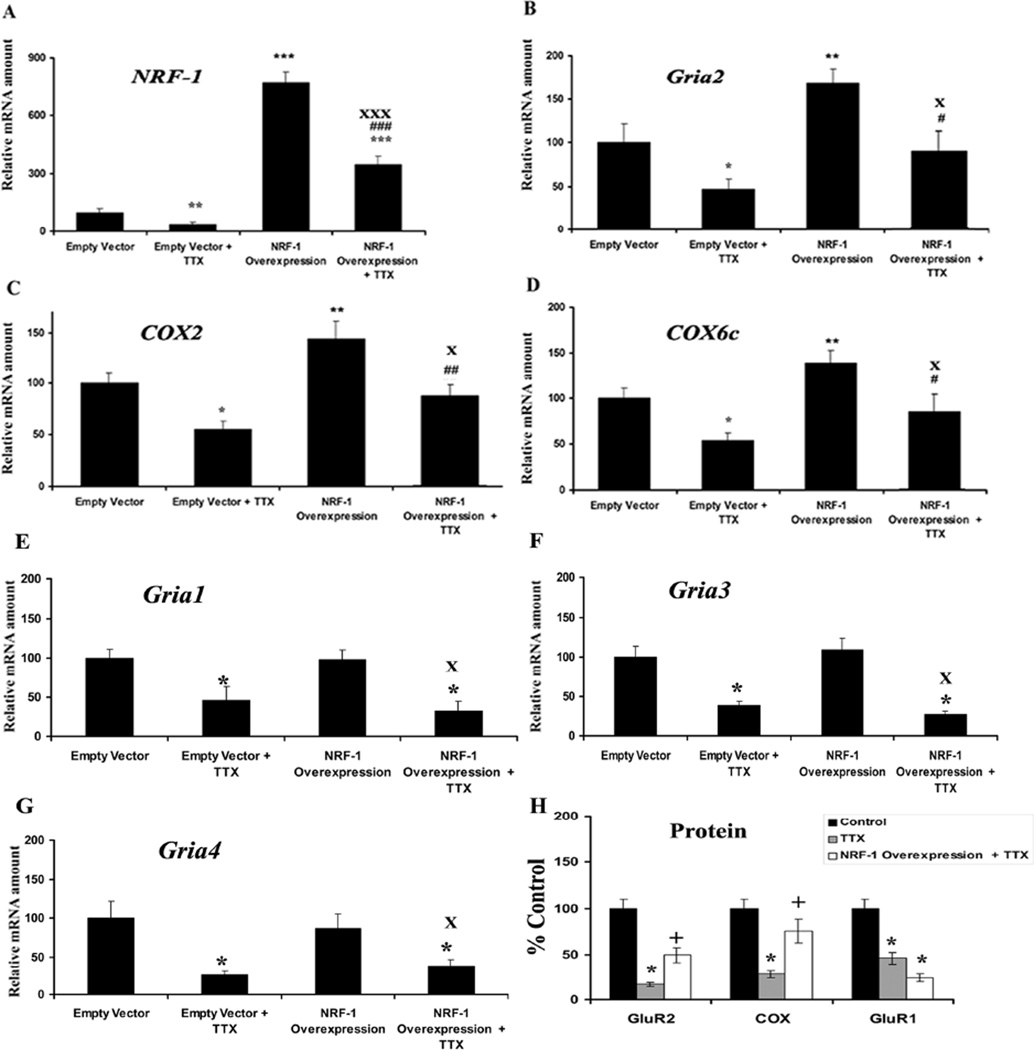Fig. 4.
NRF-1 over-expression in primary neurons significantly increased mRNA levels for Gria2, COX2, and COX6c genes and rescued them from TTX-induced reduction. NRF-1,Gria2, COX2, and COX6c mRNA levels (A–D) are significantly higher in NRF-1 over-expressing neurons but not Gria1, Gria3, and Gria4, (E–G) as compared to empty vectors. NRF-1, Gria2, COX2, COX6c, Gria1, Gria3, andGria4, mRNA levels (A–G) were all reduced by TTX as compared to controls, indicating a generalized depressive effect of TTX on neurons. Over-expression of NRF-1 was able to rescue NRF-1, Gria2, COX2, and COX6c, but not Gria1, Gria3, and Gria4 transcripts, from being down-regulated by TTX. Group means were analyzed for overall statistical significance using the Student's t-test (N = 6 for each group). All * P values were compared to empty vector (* P < 0.05, ** P < 0.01, *** P < 0.001). All #P values were compared to empty vector + TTX (#P < 0.05, ##P < 0.01, ###P < 0.001), and all X P values were compared to NRF-1 over-expression (XP < 0.05, XXXP < 0.001). (H) Protein levels for GluR2, COX and GluR1 were all reduced with TTX blockade as compared to controls in neurons. However, NRF-1 over-expression rescued protein levels for GluR2 and COX, but not for GluR1, from being down-regulated by TTX. All * P values were compared to controls (* P < 0.05). All + P values were compared to TTX (+P < 0.05).

